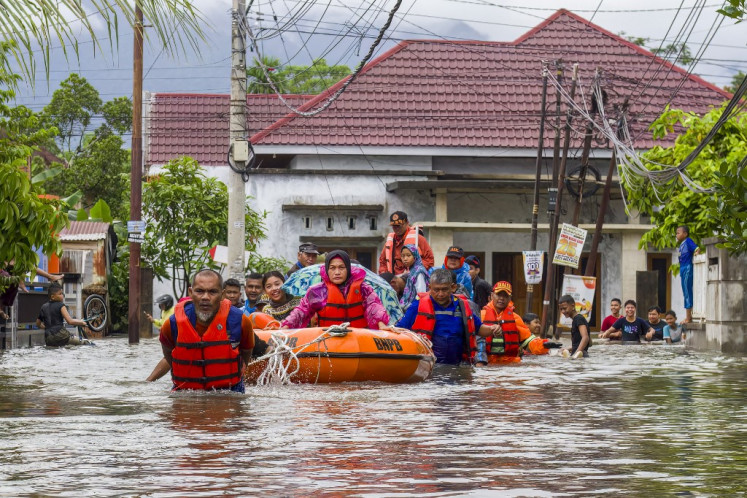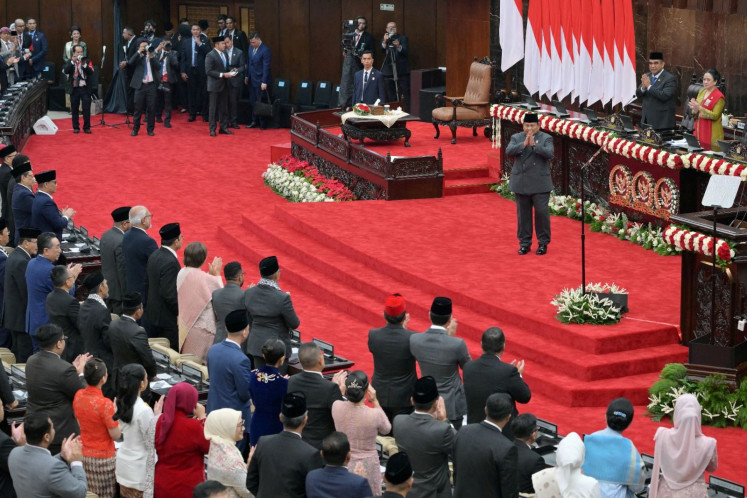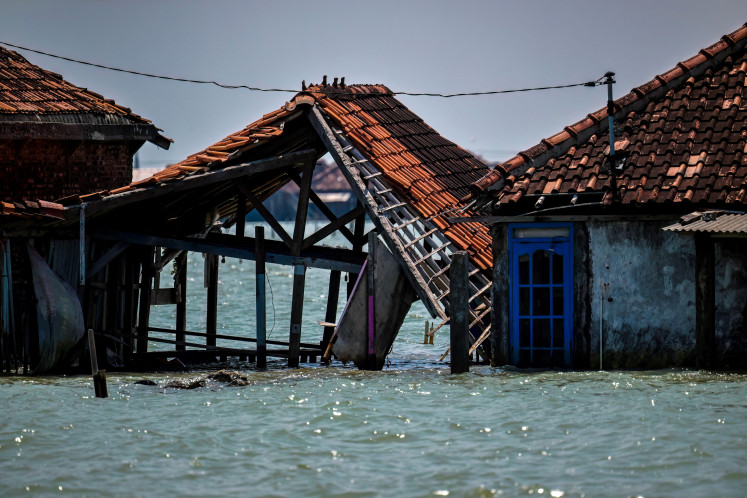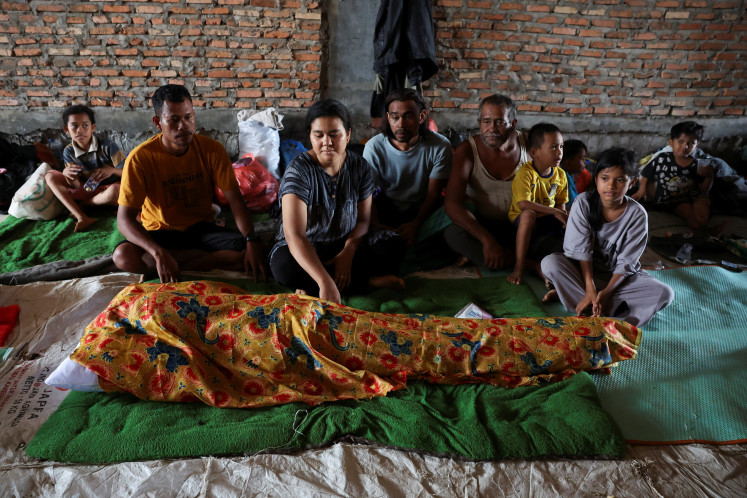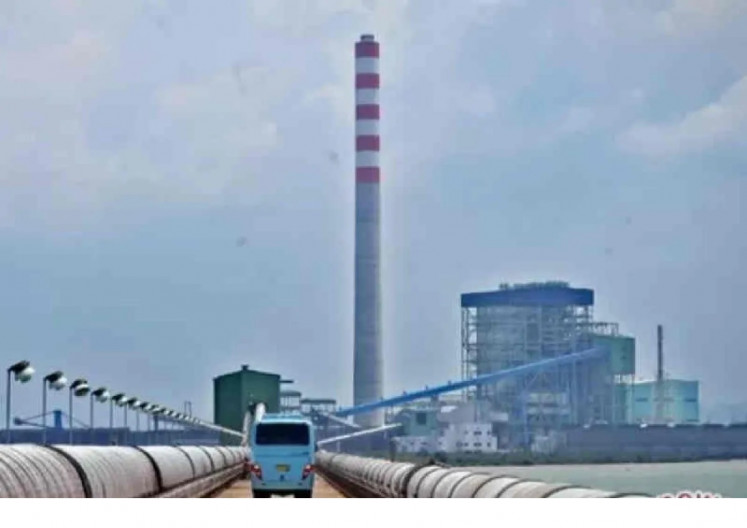Popular Reads
Top Results
Can't find what you're looking for?
View all search resultsPopular Reads
Top Results
Can't find what you're looking for?
View all search resultsDisaster risk reduction at our fingertips
Today as the world marks International Disaster Risk Reduction Day amid the COVID-19 pandemic, we are reminded that we need to invest more resources in digital solutions to build prevention ecosystems that could save many lives in the event of future natural disasters and unprecedented health crises.
Change text size
Gift Premium Articles
to Anyone
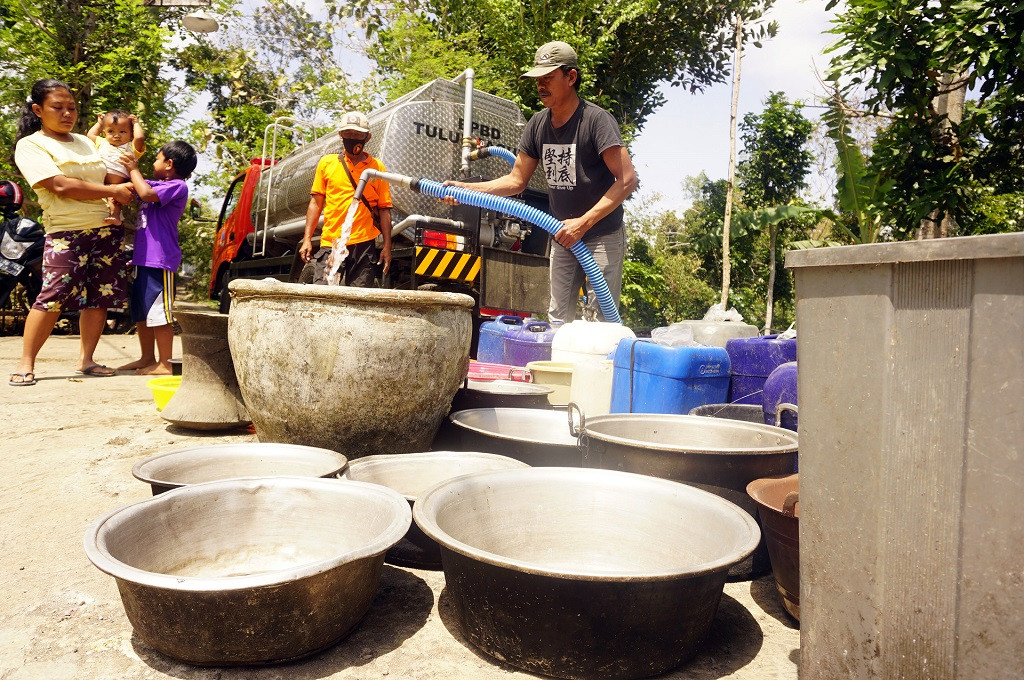 Tulungagung Disaster Mitigation Agency (BPBD) personnel deliver clean water to residents of the East Java regency on Monday. The Meteorology, Climatology and Geophysics Agency (BMKG) estimates that several regions in the country will be hit by drought during the transition from the dry season to the rainy season. (Antara/Destyan Sujarwoko)
Tulungagung Disaster Mitigation Agency (BPBD) personnel deliver clean water to residents of the East Java regency on Monday. The Meteorology, Climatology and Geophysics Agency (BMKG) estimates that several regions in the country will be hit by drought during the transition from the dry season to the rainy season. (Antara/Destyan Sujarwoko)
I
nformation saves lives. Knowing how to take action when disaster strikes makes the difference. In 2004, residents of Simeulue Island, off the southern coast of Sumatra, felt the earthquake, saw the tide pull back, and knew from local wisdom that a tsunami was coming and they fled for higher ground. Their knowledge saved lives.
Since that tragic catastrophe, Indonesia has created the National Disaster Mitigation Agency (BNPB) and its local counterparts to manage disasters and established nationwide early warning systems. Communities throughout the country have been more informed with preventive steps with students and villagers performing disaster drills in schools and villages respectively.
These are examples of disaster risk reduction; putting safeguards in place for the myriad hazards facing Indonesia to save lives and reduce potential loss. When hazards like earthquakes, tsunamis, storms, illness strike, having access to information saves lives.
And today, almost 16 years later, the technology we have at our fingertips is more advanced. Tapping into its potential, this digital resource, is the next phase of protecting people.
Today as the world marks International Disaster Risk Reduction Day amid the COVID-19 pandemic, we are reminded that we need to invest more resources in digital solutions to build prevention ecosystems that could save many lives in the event of future natural disasters and unprecedented health crises.
Recent disasters in Indonesia, like the Central Sulawesi quaketriggered tsunami or the current COVID-19 pandemic, serve as a wake-up call for the country to look beyond conventional measures when it comes to data analysis and area mapping in strengthening disaster preventive systems. And in a country where 8 out of 10 people have access to mobile phones, the answer to our future risk assessment may lie in digital technology and mobile phone applications.
The United Nations Development Program (UNDP), through the Program for Earthquake and Tsunami Infrastructure Reconstruction Assistance (PETRA) project, and in partnership with the German Development Bank, KfW, works with BNPB to rebuild vital infrastructure and community facilities, and strengthen resilience of people. We have also expanded support to BNPB’s “InaRISK” mobile application to assist with monitoring support during the COVID-19 pandemic.
The tool, developed in partnership with BNPB, informs users of imminent risks of impending natural disasters, disseminating disaster risk assessments to the government and other stake holders.
Through the Partnerships for Strengthening School Preparedness for Tsunamis in the Asia Pacific Region project, UNDP together with BNPB, the Education Ministry, Indonesian Institute of Sciences (LIPI), and UNESCO in partnership with the government of Japan developed the STEPA application to assess schools’ earthquake and tsunami preparedness. Well prepared schools will save our children.
The STEP-A application goes hand in hand with UNDP’s active participation in holding periodic tsunami drills at schools in Indonesia’s high-risk areas, also with the support of the government of Japan. The STEP-A system has also been integrated with BNPB’s “InaRISK” online platform.
There are plans for the STEPA system to provide schools with a tsunami risk information dashboard in 17 countries, supported by the Regional Project for disaster data governance (GCDS and Data Digitalization). Indonesia is providing technical assistance to those countries in partnership with Fujitsu.
Data analysis is the need of the hour and the availability of this rich data can help the government better understand where the needs are greatest to mitigate future risks. At a time when the threat from natural disasters and pandemics looms large, we must invest more in building systems that can help save lives.
If our response mechanisms could be bolstered by digital systems in the form of early warning systems, we could work on more effective reconstruction. Fewer lives would be lost, and damage could be contained. By investing in digital platforms and creating a centralized data analytical system, we could help mitigate future risks as we build resilience.
Investing in digital technology is certainly the way forward and will also help create the building blocks necessary to addressing the pressing concerns of building resilience through risk mitigation. Digital technology can help the government, policy makers — and humanitarian organizations address shortfalls in risk management and address challenges before disasters strike.
Responding to these situations also opens up the opportunity to address gender disparities. Digital solutions provide a platform for us to take an inclusive approach as these solutions are developed to ensure both women’s needs, and concerns are also considered in risk mitigation plans.
Of course, digital innovations demand improving telecommunications infrastructure and improving internet access nationwide. Digital usage in Indonesia is among the highest in the world but developing programs to improve digital literacy — coupled with expanding connectivity — will give more people the opportunity to protect themselves and be more risk-aware. We have the technology; it’s time to make it work.
But we cannot leave anyone behind. We have seen the deepening inequalities that COVID-19 has exacerbated, and as we leapfrog technological advancements, such as those for disaster risk reduction, we cannot also widen the digital divide. We must ensure that those furthest behind also have access to the digital options emerging, particularly those that help mitigate disaster. We know that women and the poorest amongst us suffer hardest in disasters. They must be protected.
We need to foster greater coherence of disaster risk reduction and climate adaptation efforts; provide access to risk information and early warning systems; and strengthen preparedness and response measures. Digitization is one solution as we seek to mitigate the risks of climate change, economic instability and antibiotic resistance, among others.
Together, these efforts strengthen the resilience of Indonesia’s urban and rural communities and can help us all build forward better.
***
The writer is UNDP Indonesia deputy resident representative




